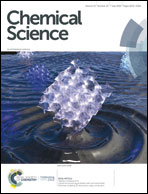Doping engineering of conductive polymer hydrogels and their application in advanced sensor technologies
Abstract
Conductive polymer hydrogels are emerging as an advanced electronic platform for sensors by synergizing the advantageous features of soft materials and organic conductors. Doping provides a simple yet effective methodology for the synthesis and modulation of conductive polymer hydrogels. By utilizing different dopants and levels of doping, conductive polymer hydrogels show a highly flexible tunability for controllable electronic properties, microstructures, and structure-derived mechanical properties. By rationally tailoring these properties, conductive polymer hydrogels are engineered to allow sensitive responses to external stimuli and exhibit the potential for application in various sensor technologies. The doping methods for the controllable structures and tunable properties of conductive polymer hydrogels are beneficial to improving a variety of sensing performances including sensitivity, stability, selectivity, and new functions. With this perspective, we review recent progress in the synthesis and performance of conductive polymer hydrogels with an emphasis on the utilization of doping principles. Several prototype sensor designs based on conductive polymer hydrogels are presented. Furthermore, the main challenges and future research are also discussed.

- This article is part of the themed collection: Most popular 2018-2019 materials chemistry articles


 Please wait while we load your content...
Please wait while we load your content...